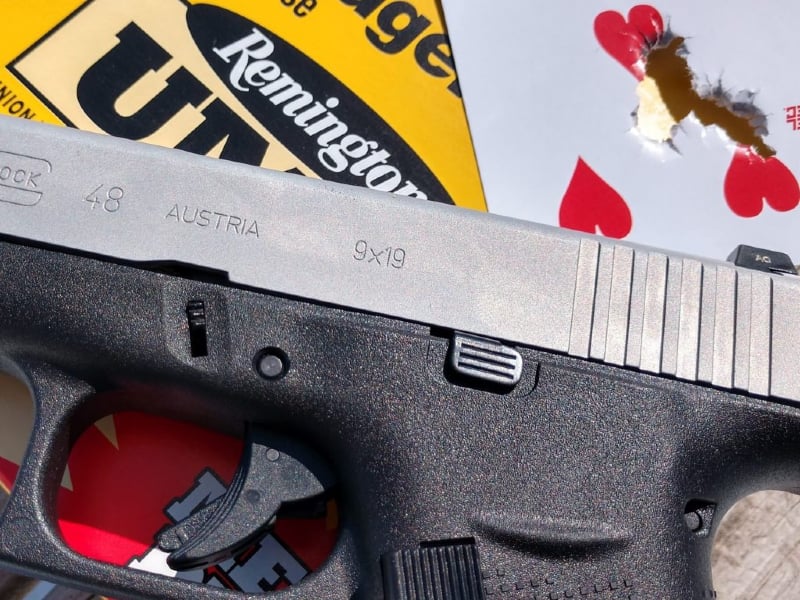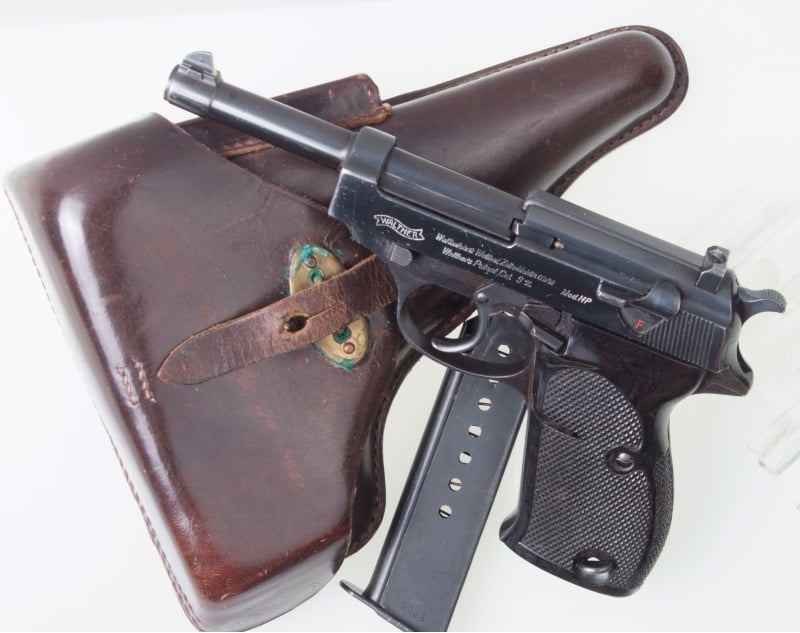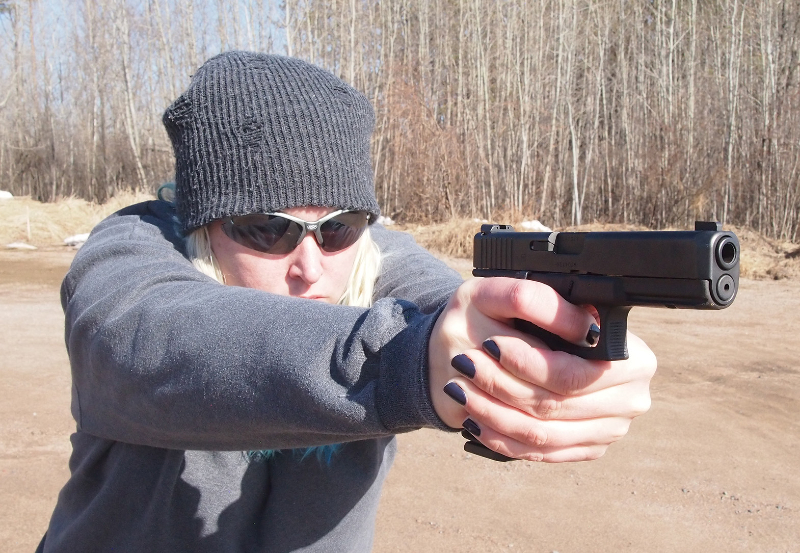If you automatically think “they’re all the same” when you hear the word “Glock,” you’re not alone. However, there are a lot of different Glocks out there. From caliber to grip width to being optics-ready, there’s practically a Glock out there for everyone. In fact, there’s an entire backstory to Glock history. Whether you’re curious about the history of the brand or wondering what all the different generations mean, we can help. Keep reading for a crash course in Glocks.

Glock History
Glock Ges.m.b.H. was founded by Gaston Glock in Austria in 1963, but it didn’t start with firearms. In the early days, the company made totally unrelated products like curtain rods, but it didn’t take long for them to start considering designing and manufacturing weapons. By the early 1970s, Glock was making knives for the Austrian army, but that wasn’t all. The Austrian manufacturer was also producing grenade casings and machine-gun belt links. It was only a matter of time until Gaston Glock turned his sights to guns. First, he had to get into polymer molding, though.
In 1980, Gaston Glock bought a machine to handle the injection-molding process necessary for the grips and sheaths that went with the knives he was making for the Austrian military. It wasn’t his first exposure to the process, but it was the initial step in what would end up being major breakthroughs in firearm manufacturing (at least according to some gun lovers).
That same year, the Austrian military voiced a desire for new guns. They wanted specific features on their new duty guns, including:
- Lighter overall weight
- Higher capacity
- Reliable, consistent trigger pull weight
- Hammer-forged barrel

At that time their duty gun was the Walther P38, a hammer-fired 9mm-chambered handgun. The P38 had a double-action/single-action (DA/SA) trigger and an 8-round magazine, meaning the soldier in question could load 9 total if a round was chambered in addition to a loaded magazine. It’s really no wonder they wanted a new gun entirely. The P38 was a remnant of Nazi Germany, and although it was a good gun for its era, it was past time to move on.
In 1983, the first Glock ever was officially adopted as the duty weapon of the Austrian Army. It was the Gen 1 Glock 17 (G17) and by 1984, it had also passed NATO testing. Gaston Glock had chosen to invent a simple platform with approximately 35 parts, a far cry from the number of parts in the average semi-auto or revolver of that time. Clearly, his idea was a winner, because the polymer pistols were poised to take the gun world by storm.
As a matter of fact, decades later, Glock states more than 65% of state, federal, and local law enforcement agencies in the United States use Glocks. There’s something to be said for the reliable performance of what many refer to as tactical Tupperware.

What Are The Glock Generations?
At the time of this writing, there are five generations of Glocks available. Of course, you’re going to be hard-pressed to locate the earlier generations for sale, and if you do, the price might be a little steeper than you’re used to for this make of gun.
The timeframe for the generations of Glocks is as follows:
- Generation 1 (Gen 1): 1982-1987
- Generation 2 (Gen 2): 1988-1997
- Generation 3 (Gen 3): 1998-2009
- Generation 4 (Gen 4): 2010-2016
- Generation 5 (Gen 5): 2017-Present
You might be curious what the difference is between, say, a Gen 1 Glock and a Gen 5. There actually have been changes made to the guns with each new generation, some of which are readily visible from the outside and others that are internal. There have been so many changes it would take far more space than we have here to list them all. Highlights of those changes include:
- Gen 1 Glocks: This generation was comprised of the first Glock 17 only. It had a smooth grip with no finger grooves, was chambered in 9x19mm, and was textured, but not like today’s models.
- Gen 2 Glocks: Among other changes, Glocks of Gen 2 had some changes made to the magazine floorplates and greater resistance added to the magazines by making changes beneath the follower spring. If you’ve ever complained about breaking in a new magazine, you could always point at Gen 2. Other new features included checkering at the forward and rearward portions of the grip, an upgraded internal safety mechanism, and a built-in, serialized steel plate. New calibers were also introduced in Gen 2 such as 40 Smith & Wesson, 380 ACP, 10mm, and 45 ACP.
- Gen 3 Glocks: This is the generation where finger grooves appeared on the grips. Aside from the grooves, there was also an indentation added as an intended thumb rest at the top of the grips, on either side. Glock also added a pin above the existing trigger pin and came up with the great idea of making an accessory rail standard. New calibers of Gen 3 included 357 Sig and 45 GAP.
- Gen 4 Glocks: Modularity was the key to this generation. Gen 4 is when Glocks started coming with a number of interchangeable beavertail backstraps and the base of the grip was made a bit smaller. This is also the generation when the long-awaited single-stack G42 and G43 were introduced. Dual springs were also added to magazines to increase longevity.
- Gen 5 Glocks: For Gen 5, Glock decided to focus first on 9mms and wait for the other calibers until further down the generational road. The G43X and G48 were launched at this time, both 9mm Slimline models that have proven exceptionally popular. Gen 5 actually saw a lot of alterations like the removal of finger grooves on the grip, the addition of the match-grade Glock Marksman barrel, and flared magazine wells. Magazines also began sporting neon orange followers in this generation.

What Do Glock Model Numbers Mean?
When you look at a list of Glock model numbers there doesn’t really seem to be any rhyme or reason. The G17 was the first design to be patented. The G20 is a 10mm, and the G27 is a .40 Smith & Wesson.
According to Glock, the model numbers are based on the date the gun’s design process began. This sort of lines up with the order in which they are patented, but it isn’t an exact science, and not everything is patented. The result is a seemingly random list of numbers that don’t sync up with the caliber or any other readily definable feature.
This is just one reason people sigh when the phrase “Glock 40” is uttered. For some reason, some people think Glocks are, by and large, 40s…and that the Glock 40 is also a 40 Smith & Wesson. The G40 is actually chambered in 10mm Auto, while 40 Smith & Wesson models include the G22, G23, G27, and G35. Don’t try to make it make sense. Either you can memorize the chamberings of every model Glock has ever made or you can learn as you go.

Should I Get A Glock?
Normally I’d say this comes down to personal preference, but there’s almost no reason not to have at least one Glock in your gun collection. They’re reliable and durable. A countless number of ridiculous tests have proven they can withstand just about anything. The old excuse that they’re double-stacks doesn’t work anymore, either; there are quite a few single-stack/Slimline models available. That means Glock has a model that’s likely to fit your hands well. Of course, Glocks aren’t for everyone, and if you can’t bring yourself to run one, leave it on the gun store counter to go to a good home. There are plenty of gun owners out there who love these plastic fantastic pistols.
Do you have a Glock? Or Glocks? Tell us about it in the comments below.


